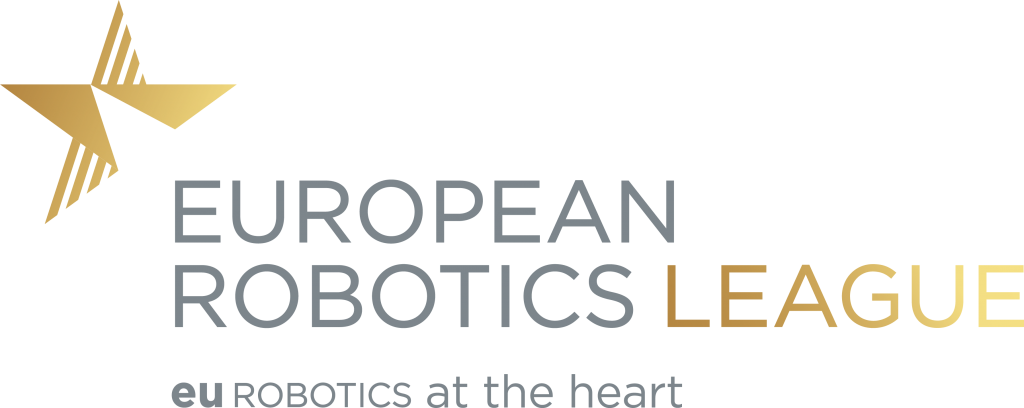
From November 25 to 28, 2024, the 1st euROBIN Coopetition will take place in Nancy, France, following Humanoids 2024, the IEEE-RAS 2024 International Conference on Humanoid Robots.
euROBIN coopetitions are designed not only to test individual team capabilities but also to foster collaborative innovation by rewarding teams for both their own achievements and the successful integration of their developed modules by others. By promoting modularity, reusability, and transferability in robotic systems, euROBIN aims to advance the frontier of robotics and artificial intelligence, driving progress in diverse application domains such as robotic manufacturing, personal robotics, and outdoor robotics for sustainable communities. Hereby, with these profiles we would like to welcome you to the pioneering world of the euROBIN project, where the brightest robotic teams from across Europe converge to participate in this groundbreaking event.

- NAME: Munich Institute for Robotics and Machine Intelligence (MIRMI) at the Technical University of Munich (TUM) or MIRMI / TUM
- TYPE: Institute
- LEADER CONTACT: Abdalla Swikir
This email address is being protected from spambots. You need JavaScript enabled to view it. - PRESS CONTACT: Dayana Ramirez-
This email address is being protected from spambots. You need JavaScript enabled to view it. - URL WEBSITE: https://www.mirmi.tum.de
- TWITTER: https://x.com/TUM_MIRMI
- LINKEDIN: https://www.linkedin.com/company/mirmi-tum/
- Other useful links: Institute YouTube Channel- https://www.youtube.com/c/MIRMIRoboticsandMachineIntelligenceTUM
- VIDEOS:
- ROBOTS OR PRODUCTS SHORT PRESENTATION:
- Franka Robotics FR3, robot manipulator equipped with a Franka Hand and wrist-mounted Intel Realsense d435i camera for the Industrial League.
- Electronic Task Board, a project repository for the internet-connected task board for evaluating real-world robot manipulation skills. This project, known as the Digital Robotic Judge, or DR.J, benchmarks asynchronous manipulation performances across the electronic task board network.
- TECHNICAL DESCRIPTION OF THE ROBOT/PRODUCTS:
-
- Manipulator: Franka Robotics FR3
- Gripper: Franka Hand
- Sensor: Intel Realsens D435i mounted on the robot wrist
- Demonstrator: Internet-connected Task Board v2023

- STAND IN HUMANOIDS 2024: To be confirmed


From November 25 to 28, 2024, the 1st euROBIN Coopetition will take place in Nancy, France, following Humanoids 2024, the IEEE-RAS 2024 International Conference on Humanoid Robots.
euROBIN coopetitions are designed not only to test individual team capabilities but also to foster collaborative innovation by rewarding teams for both their own achievements and the successful integration of their developed modules by others. By promoting modularity, reusability, and transferability in robotic systems, euROBIN aims to advance the frontier of robotics and artificial intelligence, driving progress in diverse application domains such as robotic manufacturing, personal robotics, and outdoor robotics for sustainable communities. Hereby, with these profiles we would like to welcome you to the pioneering world of the euROBIN project, where the brightest robotic teams from across Europe converge to participate in this groundbreaking event.

- NAME: Munich Institute for Robotics and Machine Intelligence (MIRMI) at the Technical University of Munich (TUM) or MIRMI / TUM
- TYPE: Institute
- LEADER CONTACT: Abdalla Swikir
This email address is being protected from spambots. You need JavaScript enabled to view it. - PRESS CONTACT: Dayana Ramirez-
This email address is being protected from spambots. You need JavaScript enabled to view it. - URL WEBSITE: https://www.mirmi.tum.de
- TWITTER: https://x.com/TUM_MIRMI
- LINKEDIN: https://www.linkedin.com/company/mirmi-tum/
- Other useful links: Institute YouTube Channel- https://www.youtube.com/c/MIRMIRoboticsandMachineIntelligenceTUM
- VIDEOS:
- ROBOTS OR PRODUCTS SHORT PRESENTATION:
- Franka Robotics FR3, robot manipulator equipped with a Franka Hand and wrist-mounted Intel Realsense d435i camera for the Industrial League.
- Electronic Task Board, a project repository for the internet-connected task board for evaluating real-world robot manipulation skills. This project, known as the Digital Robotic Judge, or DR.J, benchmarks asynchronous manipulation performances across the electronic task board network.
- TECHNICAL DESCRIPTION OF THE ROBOT/PRODUCTS:
-
- Manipulator: Franka Robotics FR3
- Gripper: Franka Hand
- Sensor: Intel Realsens D435i mounted on the robot wrist
- Demonstrator: Internet-connected Task Board v2023

- STAND IN HUMANOIDS 2024: To be confirmed


From November 25 to 28, 2024, the 1st euROBIN Coopetition will take place in Nancy, France, following Humanoids 2024, the IEEE-RAS 2024 International Conference on Humanoid Robots.
euROBIN coopetitions are designed not only to test individual team capabilities but also to foster collaborative innovation by rewarding teams for both their own achievements and the successful integration of their developed modules by others. By promoting modularity, reusability, and transferability in robotic systems, euROBIN aims to advance the frontier of robotics and artificial intelligence, driving progress in diverse application domains such as robotic manufacturing, personal robotics, and outdoor robotics for sustainable communities. Hereby, with these profiles we would like to welcome you to the pioneering world of the euROBIN project, where the brightest robotic teams from across Europe converge to participate in this groundbreaking event.

- NAME: ISIR, Sorbonne Université, CNRS
- TYPE: University research institute
- LEADER CONTACT: Stephane Doncieux -
This email address is being protected from spambots. You need JavaScript enabled to view it. - PRESS CONTACT:
This email address is being protected from spambots. You need JavaScript enabled to view it. - URL WEBSITE: https://www.isir.upmc.fr
- TWITTER: https://x.com/ISIR_labo
- LINKEDIN: https://www.linkedin.com/company/isirlabo
- ROBOTS OR PRODUCTS SHORT PRESENTATION: Tiago mobile manipulator
TIAGo robot by PAL Robotics is suitable for perception, navigation, manipulation & Human-Robot Interaction. The robot is a popular choice for research in universities and innovation centers, especially in Europe but also around the world, as well as being used in a number of collaborative EU projects.
- TECHNICAL DESCRIPTION OF THE ROBOT/PRODUCTS: Tiago mobile manipulator
The different motors of the mobile manipulator robot can be controlled using ROS interfaces. All the controllers provided are implemented as plugins of ros_control and are contained in ros_controllers. All the controllers run in the real-time control loop and have access to the full robot hardware interfaces exposed by ros_control. The motors of TIAGo can be controlled in the following modes: The wheels of the mobile base can be controlled through velocity mode. The motor of the lifting torso and the two motors of the head can be controlled in position mode. Finally, the motors of the arm can be controlled in position and in effort mode.
Compliance in TIAGo’s arm is achieved by using two mechanisms: Sensorless torque control: open-loop torque references are commanded. This is based on feedforward current control which is achieved thanks to the accurate model of the arm dynamics including mechanics, electronics cabling and covers and the low friction of the joints. This results in a high acceptable force control in the operational space. Admittance control: using the data from the force/torque sensor of the wrist, positions can be commanded taking external forces into account obtaining even much better results than when using sensorless torque control.

- STAND IN HUMANOIDS 2024: To be confirmed

